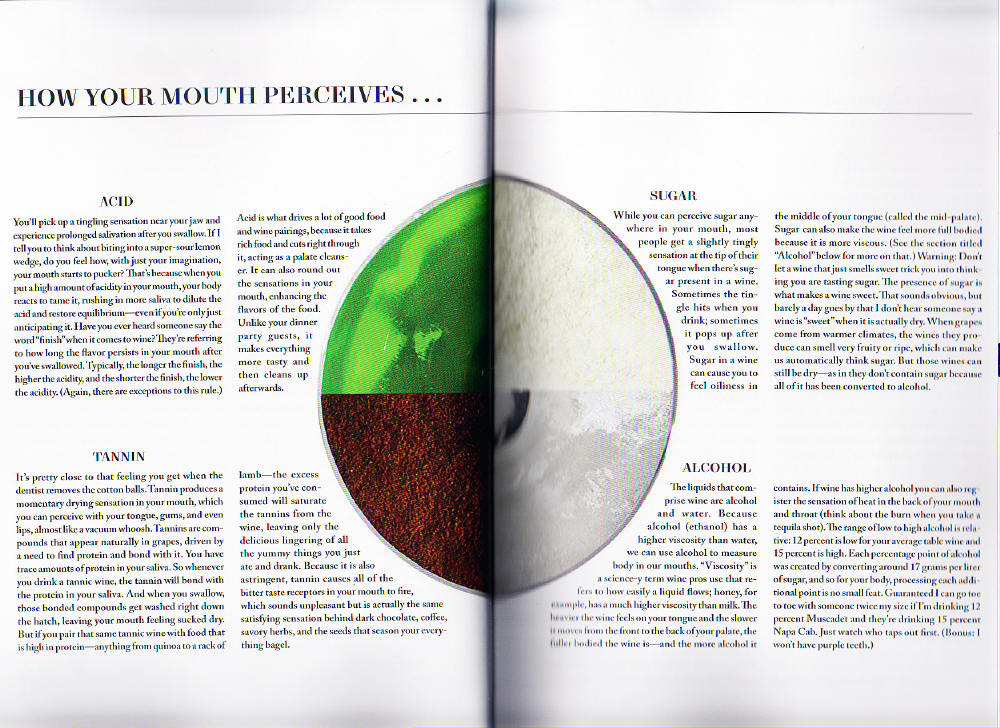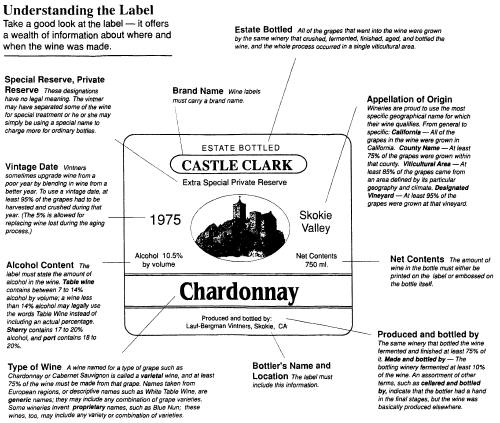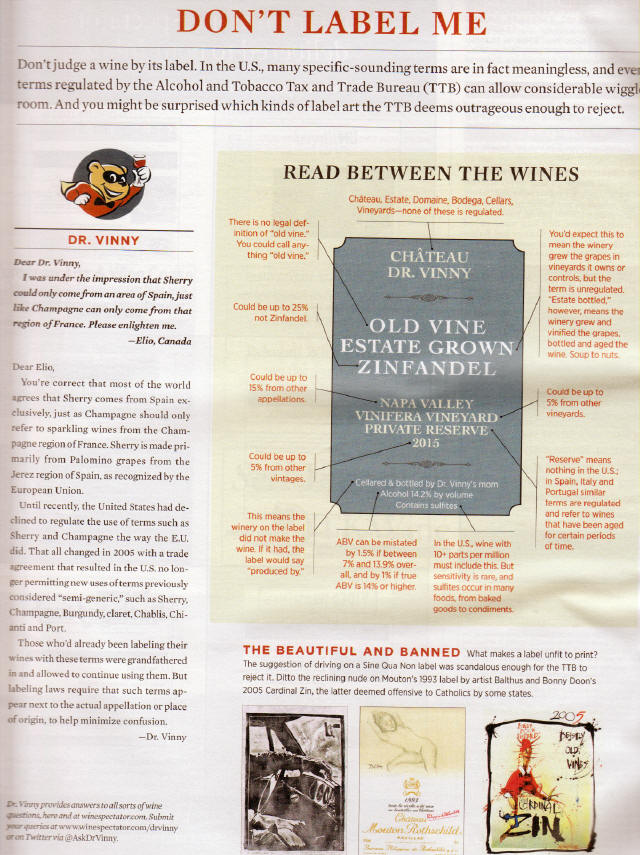Wine 101...
These brief excerpts helped me immensely in tasting and understanding
wine.
BIG MACS AND BURGUNDY by Vanessa
Price

THE
METHOD OF EVALUATION by Michael Polseno
Setting:
Wine
evaluation should be conducted using a clear crystal glass of
approximately 8-10 ounces. A white tablecloth is preferable and a
good light source is certainly helpful. The glass should be no more
than 1/4 filled, allowing better appreciation of appearance and
aroma.
Appearance:
Attempt to describe the wine’s color, clarity,
and comment on its “legs” and maturity. Holding the glass by its
stem, tilt it away from you and look through the upper portion of
the wine’s edge to best determine its true color. A maturing wine
will appear to have a slight browning or lightening at its edge.
Next, hold the glass to a light source and look directly through to
ascertain is clarity. Next, swirl the wine a few times in the glass,
allowing the wine to cover the upper 2/3 of the wall. Observe the
“legs” as the wine falls from the glass wall. The legs may be very
thick, or thin, may drop very rapidly, or very slowly. The richer
and thicker the wine, the slower and thicker will be the wine’s
legs.
Nose:
One of the more important qualities of a wine
is its nose, because the aroma or bouquet of a wine will follow
through to its taste and finish. It’s also one of the most
subjective of evaluations because each person’s sense of smell can
be quite different. It’s very difficult to describe something you
have not smelled and identified previously. In order to determine
the wine’s nose you must again swirl the wine in the glass, bring
your nose directly into the glass and smell. Repeat this procedure
several times before actually tasting the wine. You should be able
to describe more aromas each time you smell. Properly described, the
aromas are odors originating from the grapes of the wine and the
bouquet are odors originating from older wines that have developed
within the bottle during its aging process.
Taste:
A wine’s taste is determined by evaluating its
sweetness, its acidity and bitterness. Its flavor is a combination
of these things and its nose. Remember, 80% of what we think we
taste we actually smell. Without our olfactory senses wine and food
taste very bland. To describe the wine’s taste, take a small sip and
first ascertain its degree of sweetness and properly describe it.
Off dry, dry, etc. Next, move the wine further back in the mouth to
the middle portion of your tongue and attempt to describe the wine’s
degree of acidity. Then move the wine to the back of the mouth and
describe its degree of bitterness or tannin. Because white wines are
characteristically not tannic, you would substitute wood taste
rather than tannin when evaluating. Take several small sips and
concentrate individually on each major taste characteristic. Then
take a larger sip of wine and attempt to chew the wine bringing it
into contact with the entire roof of the mouth, pressing the tongue
against the palate to determine the wire’s body and texture. Degree
of alcohol accounts primarily for a wine’s body. You could expect a
wine higher in alcoholic content to be a big, full wine while a
lower alcoholic content would produce a light or thin wine. Next,
attempt to ascertain the wine’s flavor by holding a sip of wine in
the mouth for a few seconds aerating it to reveal its taste and
olfactory components. Look to the nose characteristics and combine
all of the individual taste characteristics to describe the wine’s
overall flavor. Attempt to comment about the wine’s ageability. Does
it have the necessary balance of elements to age gracefully? Acid
balances against sweetness, fruit balances against oak and tannin
and alcohol balances against acid and flavor. Ask yourself the
questions, “Is this wine overly acidic? Lacking fruit so that it
will simply dry out as it ages? Does alcohol dominate against the
acid and flavor?” Such a wine will give a very warm or hot feeling
in the mouth. Is the wine well balanced with a proper degree of
bouquet, sweetness, acidity and flavor?
Finish:
A wine’s finish and aftertaste is also an
important characteristic. After swallowing the wine you have tasted,
evaluate how it moves through the throat. Is it rough? Smooth? Oily?
Watery? Again look to the nose and determine the wine’s aftertaste.
Oftentimes a wine’s aftertaste may be completely different than its
flavor in the mouth. Evaluate how long this taste remains with you
and describe it as short, medium, long, etc.
I found a simple, generic wine tasting evaluation
sheet a few years back and have used it ever since:

Below are a couple of brief gems regarding wine
labels:







Mackey Group, Inc. © 2002 - 2021

